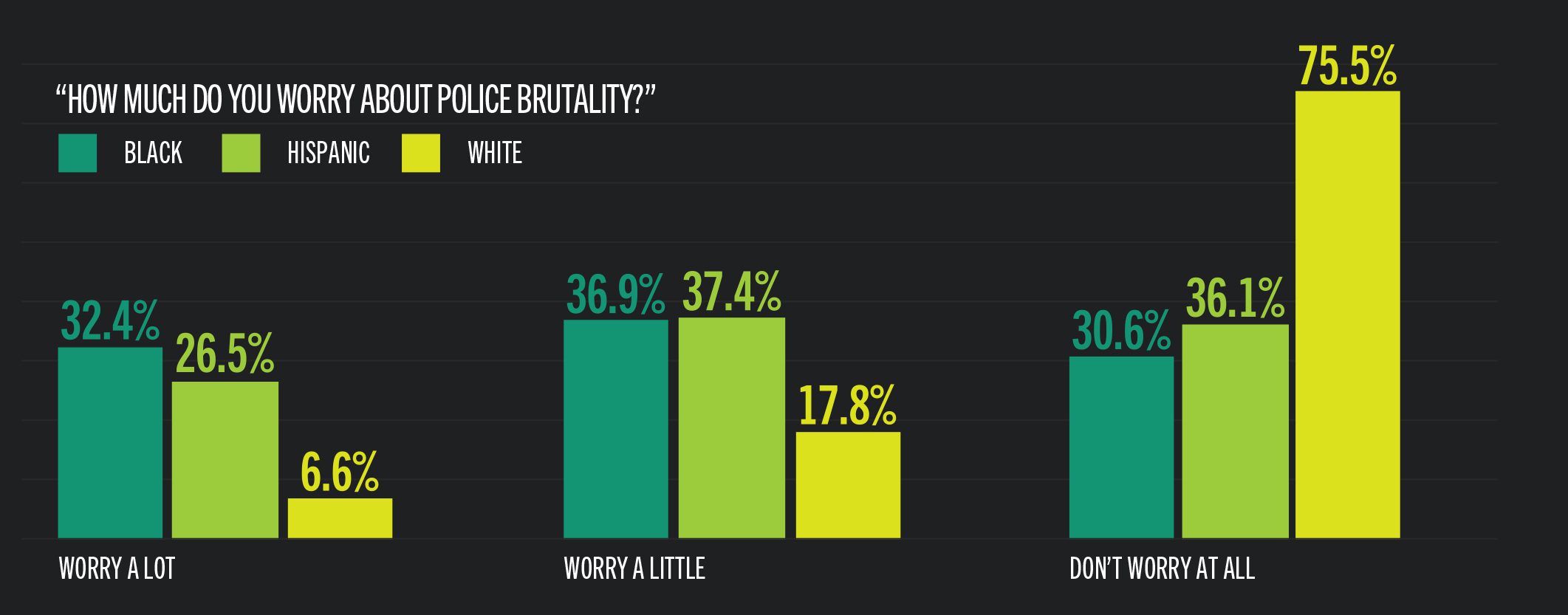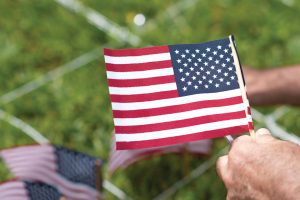Riding the Emotional Storm
Studies On Police Brutality And The Pandemic Point To A Climate Of Fear
By Sara Withrow
Racial, social and political tensions collided in 2020 against the backdrop of a global pandemic. Spurred by a divisive presidential election, the police killing of African American George Floyd Jr. and a partisan mainstream media, this perfect storm had the makings of an “emotional climate” of fear.
“An emotional climate is where fear predominates the whole society; people are restricted in their behaviors and they respond in different ways because of those fears. It’s fear at a macro level, where it permeates everything,” said Melissa Sloan, a sociologist of emotion and an associate professor at the USF Sarasota-Manatee campus.
Sloan and Murat Haner, an instructor of criminology at USF Sarasota-Manatee, collaborated with several colleagues from other universities on two separate studies that help inform the whirlwind of emotions experienced in 2020.
Fear of Police Brutality
Floyd’s May 2020 death amplified the emotional climate already piqued by the pandemic. A 2018 survey conducted by Sloan, Haner, et al, provides insight into some of the emotions underpinning the public outrage that followed Floyd’s killing. The survey found that Black and Hispanic Americans are, respectively, five and four times more fearful of police brutality than white Americans.
The article, “Worrying About Police Brutality: The Hidden Injuries of Minority Status in America,” describes the survey’s findings. Victims & Offenders: An International Journal of Evidence-based Research, Policy, and Practice published the article online – just one day after Floyd was killed while in custody by Minneapolis police. “I don’t have words. It’s just appalling,” Sloan said, recalling the video of Derek Chauvin pinning Floyd’s neck to the ground with his knee. “That these fears are justified, that’s what’s so awful.”
SUBSCRIBE TO
Research: USF Sarasota-Manatee Campus
Subscribe to our digital Research Magazine and full access to online content and e-Alerts
In April 2021, a jury found officer Derek Chauvin guilty of three charges in causing Floyd’s death.
Breaking new ground, the 2020 study is the first to explore the fear of police brutality, specific and apart from a general fear of police. “Taken as a whole, the study reveals an insidious picture in which communities worry about those they are supposed to trust in their greatest time of need. There is a substantial subpopulation in America that worries about being victimized, not by some perpetrator, but by the State – the very people sworn to protect and serve them,” Haner said.
The study also addressed levels of worry related to being a victim of crimes unrelated to the police, including racial/hate crimes, violent crimes, a home invasion, a mass shooting, and a terrorist attack.
“Across the board, Blacks and Hispanics were more fearful than whites,” Sloan said.
Accenting the racial disparity, 75.5% of whites reported they “do not worry at all” about violent crime, compared to 30% of non-whites. The study illuminates a clear racial/ethnic divide between whites, and Blacks and Hispanics, when it comes to the fear of being victimized, Sloan said.
“They [white people] have no concept, no idea of what other people worry about.” Sloan added, “One of the big contributions of this study is to show that these underlying fears are out there, and they’re disadvantaging these segments of the population and we’re not hearing about it.”
Research indicates that the hidden injuries of fear of police brutality and other violent crimes can impact individuals and society.
These injuries can have psychological and physical health consequences and can also result in avoidance and protective behaviors; e.g., restricting normal activities, avoiding social interaction, not seeking help from law enforcement and buying a gun, Sloan said.
A surprising result from the study was that Hispanics were more fearful of being victimized than Blacks in three violent crime scenarios, and their fear of police brutality was on par with Blacks. Hispanics don’t have a national movement akin to Black Lives Matter (BLM), nor do they have the political advocacy and media muscle that BLM garners. Lacking these, the fear experienced by Hispanics goes largely unnoticed, Sloan said.
Given that Hispanics are the second largest racial/ethnic group (18%) in the U.S., and their number is growing by roughly 2% per year, this finding is particularly significant.
Pandemic Fears
In a separate study that assessed personal fear and altruistic fear (the fear for other people’s well-being) related to the pandemic, Hispanics and Blacks also expressed greater levels of worry compared to whites.
“Pandemic Emotions: The Extent, Correlates, and Mental Health Consequences of Fear of COVID-19,” published in the May 2021 edition of the online journal, Sociological Spectrum, details the findings of a nationwide survey conducted in March 2020.


Authored by Sloan, Haner and several colleagues, the article likens pandemic fears to the fear of terrorism. Both are adverse events that cause uncertainty and a potential serious threat to personal safety and create a sense of helplessness, Sloan said.
In addition to race/ethnicity, the study found several factors appeared to contribute to people’s fear of the pandemic, including level of media exposure, their political leanings and gender.
The study also looked at psychological distress related to the pandemic. People who reported higher levels of personal fear also reported increased levels of psychological distress. Additionally, those who felt they had a greater risk of dying from the virus, or who had a friend or family member who had contracted the disease, also reported more mental distress.
While fewer whites experienced personal fear, compared to non-whites, whites reported greater levels of psychological distress.
Lifestyle disruptions due to increased isolation, the closure of businesses and workplaces, and the potential for quarantine, severe illness and long-term health effects are frightening.
It’s no surprise that the pandemic caused elevated levels of fear across the board, Sloan said. In fact, only 14% of survey respondents indicated they were “not worried at all” about dying from the virus – and this was in March, when COVID-19 had killed just 2,135 people. It’s highly likely that people’s fear increased as the pandemic intensified, Sloan said. As of May 2021, nearly 600,000 people had died from the disease in the U.S.
For Sloan, the study is important because fear changes people’s behaviors and can have long-term psychological and emotional impacts.
“The high levels of fear noted in the survey – that early on in the crisis – suggest the origination of a climate of fear that could dominate American society for quite some time,” she said.



